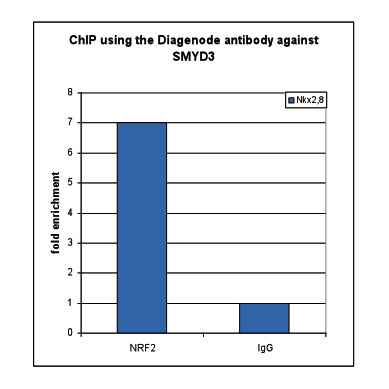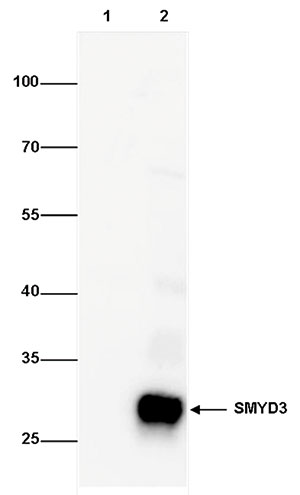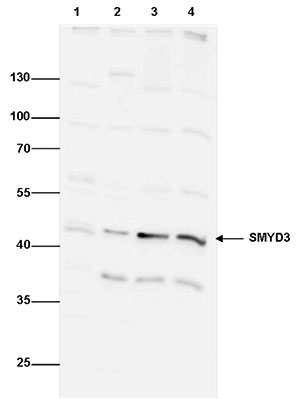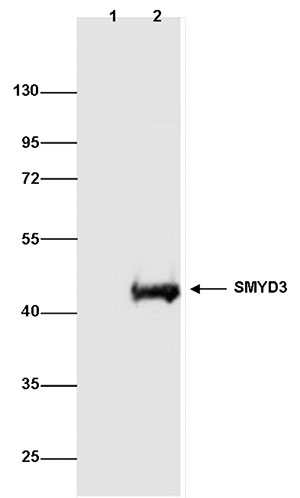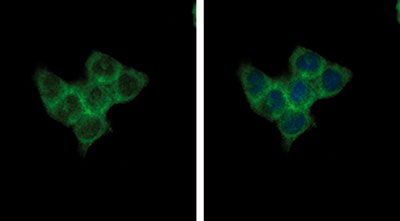SMYD3 (UniProt/Swiss-Prot entry Q9H7B4) is a histone methyltransferase which specifically di- and trimethylates histone H3. It is also able to methylate lysine 5 of histone H4 but does not monomethylate H3K4. SMYD3 is part of an RNA polymerase complex and hence plays an important role in transcriptional activation.


